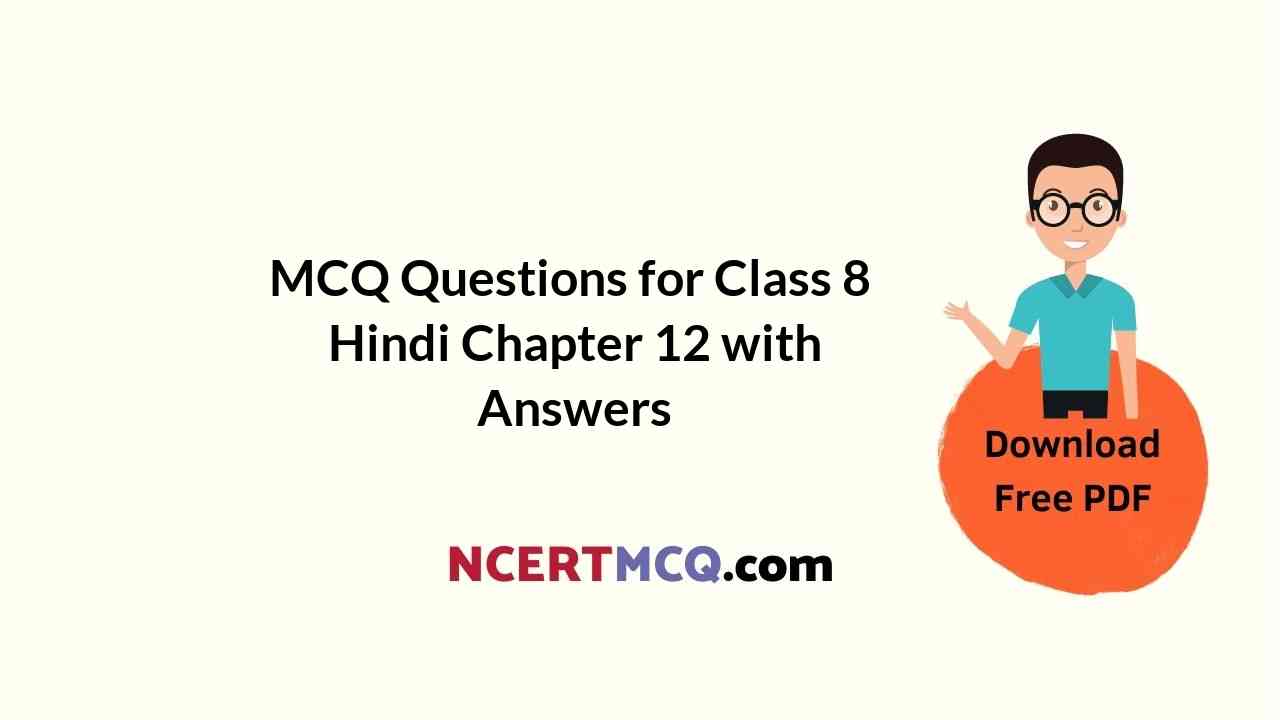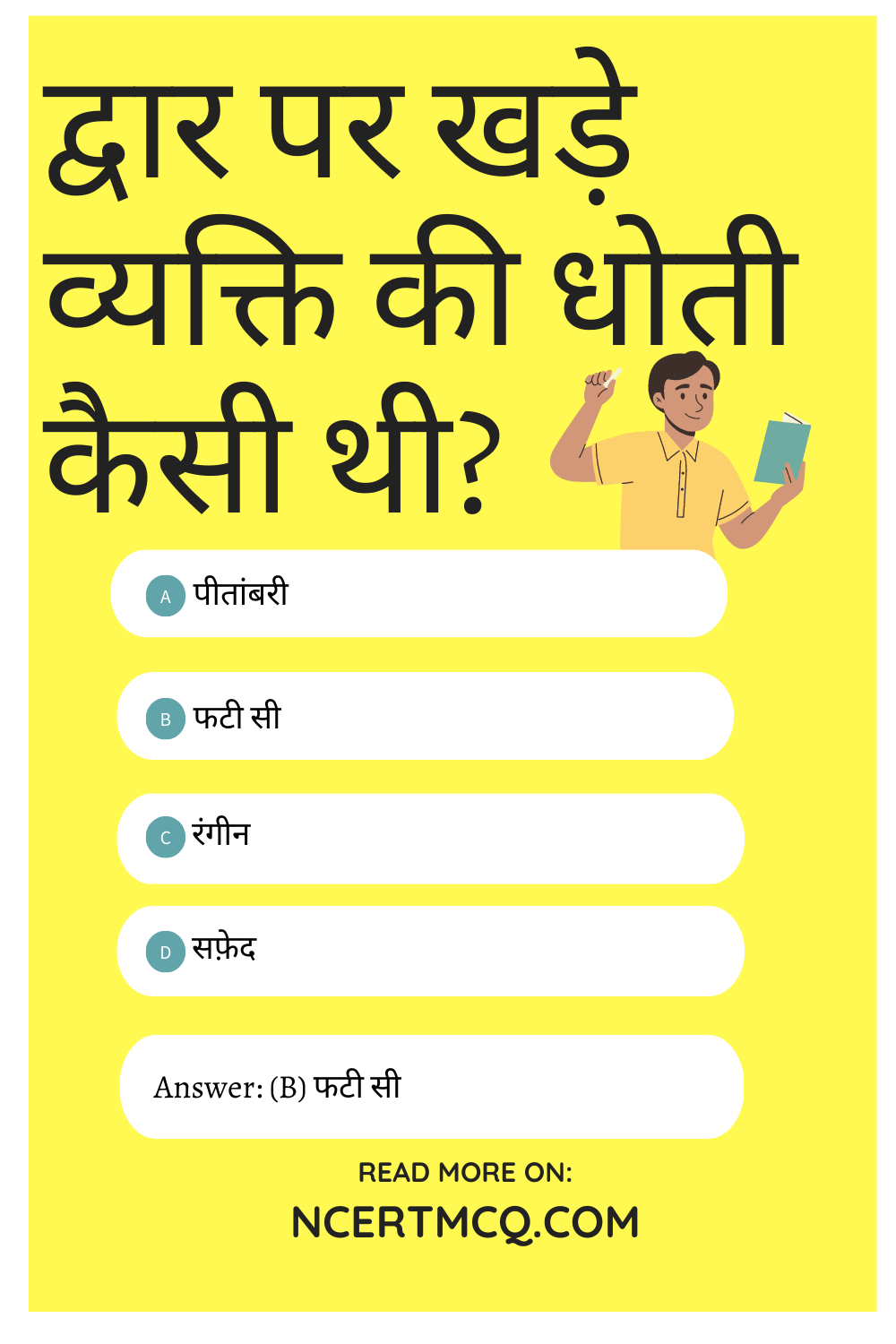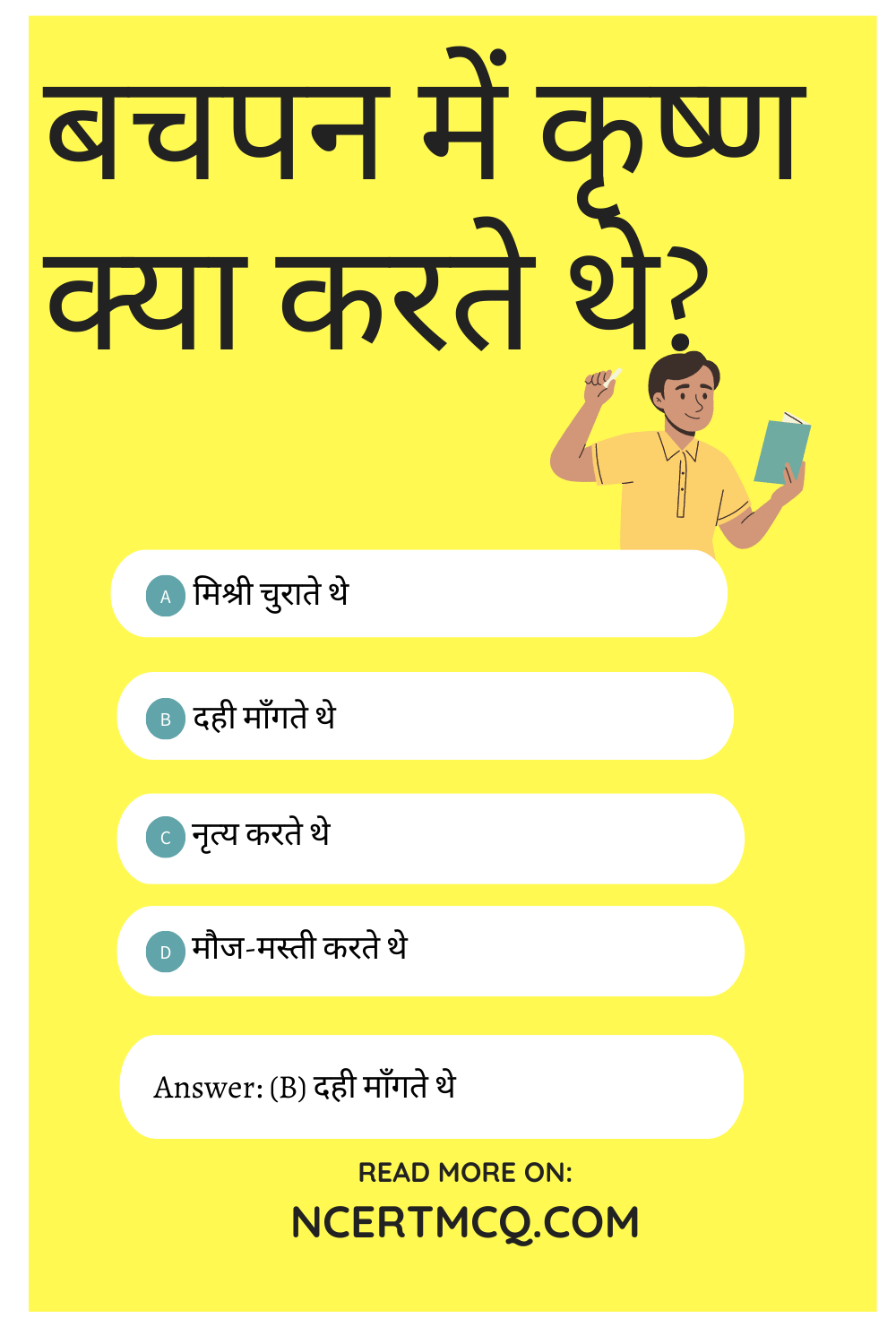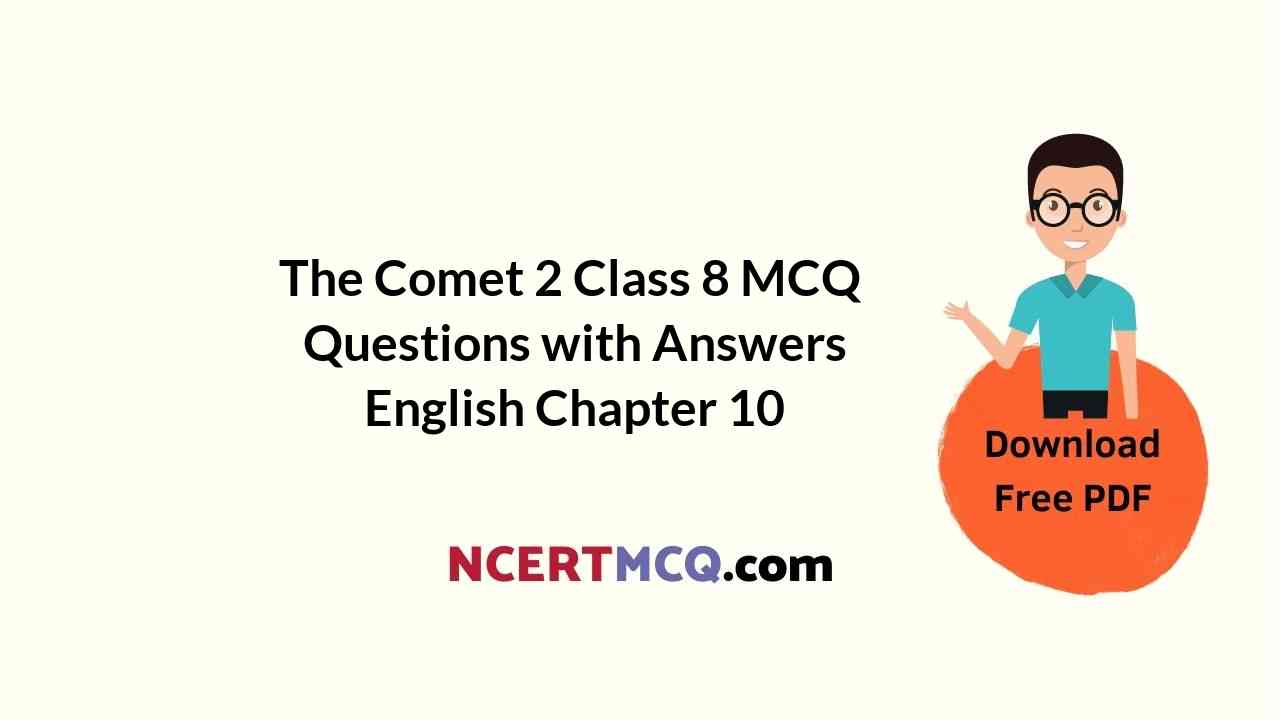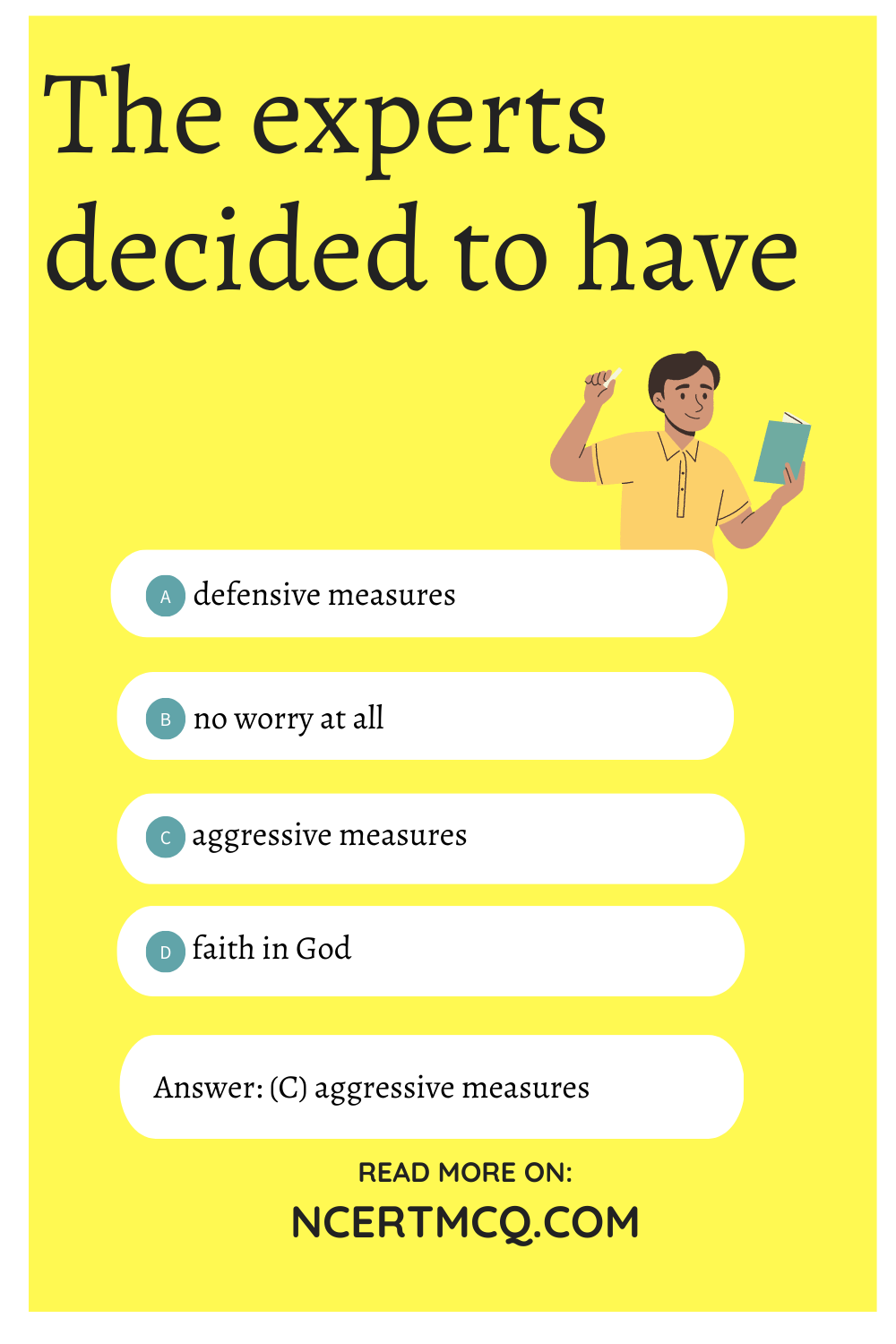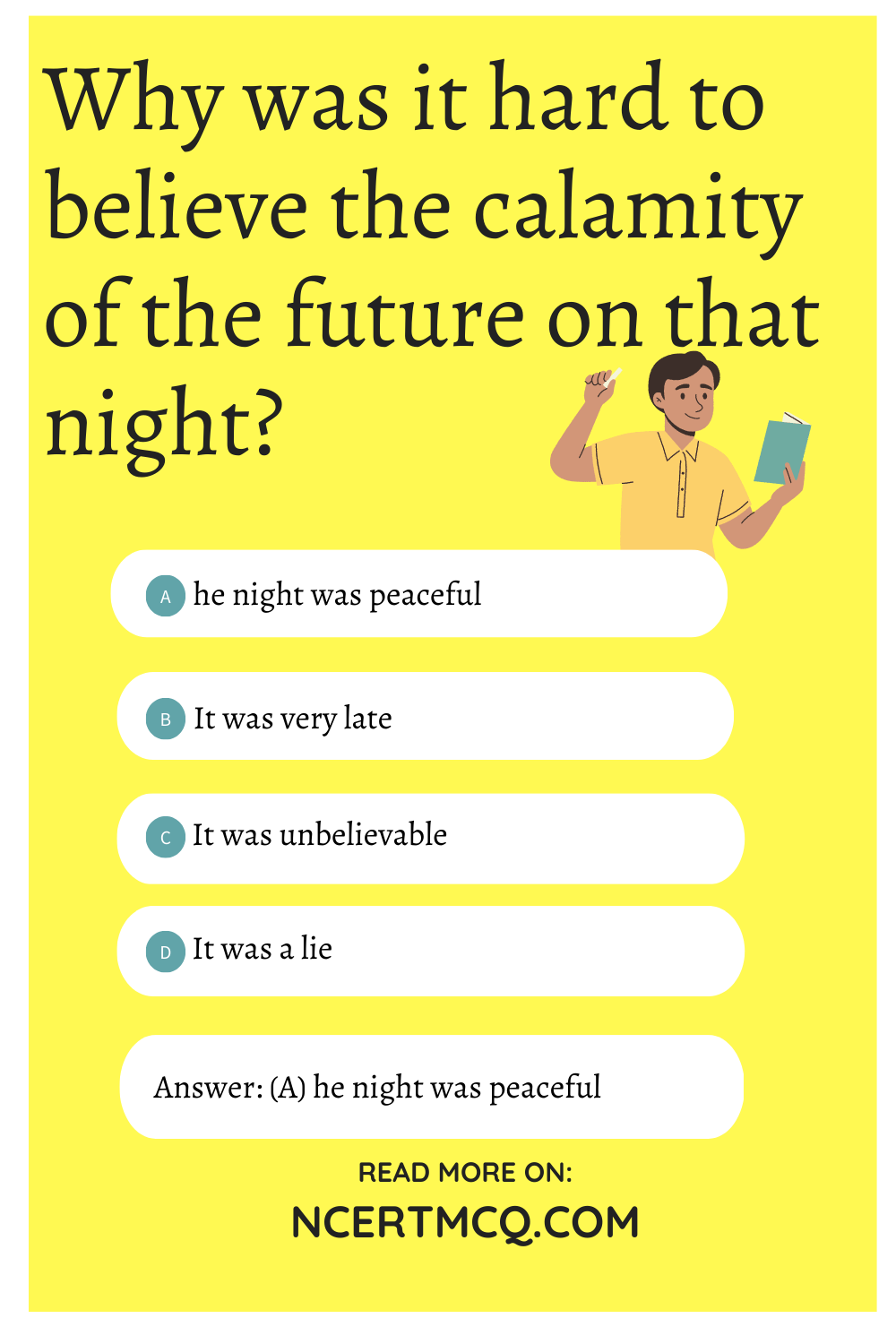CBSE Sample Papers for Class 10 Science in Hindi Medium Paper 4 is part of CBSE Sample Papers for Class 10 Science in Hindi Medium . Here we have given CBSE Sample Papers for Class 10 Science in Hindi Medium Paper 4
CBSE Sample Papers for Class 10 Science in Hindi Medium Paper 4
| Board | CBSE |
| Class | X |
| Subject | Science |
| Sample Paper Set | Paper 4 |
| Category | CBSE Sample Papers |
Students who are going to appear for CBSE Class 10 Examinations are advised to practice the CBSE sample papers given here which is designed as per the latest Syllabus and marking scheme as prescribed by the CBSE is given here. Paper 4 of Solved CBSE Sample Papers for Class 10 Science in Hindi Medium is given below with free PDF download solutions.
समय : 3 घण्टे
पूर्णांक : 80
सामान्य निर्देश :
- इस प्रश्न पत्र के दो भाग, A व B हैं। आप को दोनों भाग करने हैं।
- सभी प्रश्न अनिवार्य हैं।
- भाग A के सभी प्रश्न एक साथ करने हैं तथा भाग B के सभी प्रश्न एक साथ करने हैं।
- भाग A के प्रश्न सं० 1 व 2 एक अंक के हैं। इनका उत्तर एक शब्द अथवा एक वाक्य में लिखना है।
- प्रश्न सं० 3 से 5 तक दो अंक के हैं। इनका उत्तर 30 शब्दों में (प्रत्येक प्रश्न के लिए) लिखिए।
- प्रश्न सं० 6 से 15 तक तीन अंक के हैं। इनमें से प्रत्येक प्रश्न का उत्तर 50 शब्दों में लिखिए।
- प्रश्न सं० 16 से 21 तक पाँच अंक के हैं। इनमें से प्रत्येक प्रश्न का उत्तर 70 शब्दों में लिखिए।
- भाग B के प्रश्न सं० 22 से 27 तक प्रयोगात्मक कौशल पर आधारित हैं। प्रत्येक प्रश्न दो अंक का है।
SECTION A
प्र०1.
किसी विद्युत उपकरण की विद्युत शक्ति (W), उसमें से प्रवाहित होने वाली विद्युत धारा (amp) तथा विभवांतर (Volt) में संबंध स्थापित कीजिए।
प्र०2.
जीन क्या है?
प्र०3.
मानवों के शुक्राणुओं और अण्डों के बीच प्रमुख अंतर क्या है? इस अंतरे का महत्त्वं लिखिए।
प्र०4.
निम्नलिखित का उत्तर कारण सहित लिखिए :
(a) सोडियम धातु को मिट्टी के तेल में क्यों रखा जाता है?
(b) जब नीले रंग के कॉपर सल्फेट के विलयन में जब कुछ मात्रा में एल्युमिनियम पाउडर डालते हैं। तो वह रंगहीन क्यों हो जाता है?
प्र०5.
घरेलू विद्युत परिपथों में विद्युत उपकरणों को समान्तर क्रम में क्यों लगाया जाता है? कोई दो कारण लिखिए।
प्र०6.
एक बर्तन में ठोस केल्शियम ऑक्साइड लेकर उसमें धीरे से जल डाला गया तो
(i) इस प्रयोग के दो प्रेक्षण लिखिए।
(ii) इस अभिक्रिया का संतुलित रासायनिक समीकरण लिखिए।
अथवा
निम्नलिखित अभिक्रियाओं के लिए संतुलित समीकरण लिखिए :
(a) तनु H2SO4 अम्ल की एल्युमिनियम पाउडर से अभिक्रिया।
(b) सोडियम कार्बोनेट की तनु HCl अम्ल के साथ अभिक्रिया।
(c) चूने के पानी में से CO2 गैस को गुज़ारना।
प्र०7.
किसी वृत्ताकार चालक कुण्डली में विद्युत प्रवाहित होने पर उसके चुबंकीय क्षेत्र के किसी बिंदु पर चुबंकीय प्रबलता का क्या प्रभाव होगा जब :
(i) उसमें प्रवाहित होने वाली विद्युत धारा की मात्रा बढ़ा दी जाए।
(ii) यदि कुण्डली से उस बिंदु की दूरी बढ़ा दी जाए।
(iii) यदि कुण्डली में चालक तार के लपेटे बढ़ा दिए जाएं।
प्र०8.
एक विद्युत बल्ब तथा एक चालक जिसका प्रतिरोध 4 ओम है, एक 6 वोल्ट की बैटरी के साथ श्रेणी क्रम में जुड़े हैं। यदि बल्ब में से 0.25A की विद्युत धारा प्रवाहित हो रही है तो उस बल्ब का प्रतिरोध ज्ञात कीजिए।
प्र०9.
निम्नलिखित की परिभाषा लिखिए।
(a) प्रतिवर्ती क्रिया
(b) अंतग्रंथन (सिनेप्स)
(c) प्रकाशानुवर्तन
प्र०10.
गांव में रामू की खेती की जमीन है। वह उस पर एक ईंटों का भट्ट्ठा लगाना चाहता है। उसका दोस्त श्याम उसे कहता है कि वह भट्ठा लगाने का अपना इरादा बदल दे क्योंकि भट्ठा लगाने से उसकी चिमनी से निकले धुएं से गांववालों के स्वास्थ्य पर बुरा प्रभाव पड़ेगा तथा इसका प्रभाव बाकी लोगों के खेतों से उत्पादित होने वाली फसलों पर भी पड़ेगा। रामू उसकी सलाह मान लेता है तथा अपना इरादा बदल लेता है।
(a) श्याम किस प्रकार की सोच रखता है?
(b) व्याख्या करें कि श्याम की इस सोच ने किस प्रकार गांववालों को नुकसान होने से बचाया।
प्र०11.
कार्बन यौगिकों की समजातीय श्रेणियाँ क्या हैं? ऐल्डिहाइडों की समजातीय श्रेणी के दो क्रमागत सदस्यों के आणिवक-सूत्र लिखिए। उल्लेख कीजिए कि इन यौगिकों का कौन-सा भाग इनके
(i) भौतिक और
(ii) रासायनिक गुणधर्मों का निर्धारण करता है।
प्र०12.
निम्नलिखित सारणी का अध्ययन कीजिए जिसमें छह तत्वों A, B, C, D, E और F की स्थितियाँ उनकी आधुनिक आवर्त सारणी में स्थितियों के अनुसार दर्शायी गई हैं

उपर्युक्त सारणी के आधार पर निम्नलिखित प्रश्नों के उत्तर दीजिए :
(i) उस तत्व का नाम लिखिए जो केवल सहसंयोजी यौगिक बनाता है।
(ii) उस तत्व का नाम लिखिए जिसकी संयोजकता तीन है और वह धातु है।
(iii) उस तत्व का नाम लिखिए जिसकी संयोजकता तीन है और वह अधातु है।
(iv) D और E में से किस तत्व का आकार बड़ा है और क्यों?
(v) तत्व C और F जिस परिवार के सदस्य हैं उनका सामान्य नाम क्या है?
प्र०13.
उपयुक्त उदाहरणों की सहायता से व्याख्या कीजिए कि कुछ लक्षण अगली पीढ़ी को क्यों नहीं दिए जा सकते हैं। इन लक्षणों को क्या कहते हैं?
अथवा
“ऐसा हो सकता है कि कोई लक्षण वंशानुगत हो जाए परन्तु व्यक्त न हो।” एक उपयुक्त उदाहरण की सहायता से इस कथन की पुष्टि कीजिए।
प्र०14.
कोई छात्र किसी दर्पण के ध्रुव से मोमबत्ती की ज्वाला को 15 सेमी दूरी पर रखकर उसके प्रतिबिम्ब को 60 सेमी दूरी पर स्थित पर्दे पर प्रक्षेपित करना चाहता है।
(i) दर्पण के उस प्रकार का नाम लिखिए जिसे उसे उपयोग करना चाहिए।
(ii) बनने वाले प्रतिबिम्ब का रैखिक आवर्धन ज्ञात कीजिए।
(iii) बिम्ब और उसके प्रतिबिम्ब के बीच की दूरी कितनी है?
(iv) इस प्रकरण में प्रतिबिम्ब बनना दर्शाने के लिए किरण आरेख खींचिए।
प्र०15.
श्वेत प्रकाश का एक पतला किरण-पुंज, PQ चित्र में दर्शाए अनुसार, काँच के किसी प्रिज्म ABC में से गुजरता है?
इस चित्र को अपनी उत्तर पुस्तिका पर खींचिए और पर्दे DE पर निर्गत पुंज जैसा दिखाई देगा उसका पथ खींचकर दर्शाइए।
(i) प्रेक्षण की जाने वाली परिघटना का नाम और उसका कारण लिखिए।
(ii) इसके अतिरिक्त प्रकृति में इसे परिघटना को आप और 3 कहाँ प्रेक्षण करते हैं?
(iii) इस प्रेक्षण के आधार पर श्वेत प्रकाश के अवयवों के बारे में जो निष्कर्ष निकाला जा सकता है उसका उल्लेख कीजिए।

प्र०16.
आपको एल्युमिनियम का एक बर्तन दिया है। आपको तनु HCl, तनु HNO3, ZnCl2 विलयन तथा जल (H2O) भी दिये गये हैं। इनमें से कौन-कौन से विलयन एल्युमिनियम के बर्तन में रखे जा सकते हैं? प्रत्येक में होने वाली अभिक्रिया के विषय में भी लिखिए।
प्र०17.
(a) दो एक जैसे 10 Ω के प्रतिरोधकों को 6 वोल्ट की बैटरी के साथ बारी-बारी से पहले श्रेणी क्रम में तथा फिर समान्तर क्रम में लगाया गया। दोनों स्थितियों में शक्ति का अनुपात ज्ञात करें।
(b) एक किलोवाट घण्टा (kWh) तथा ऊर्जा की S.I. इकाई के बीच संबंध स्थापित करें।
प्र०18.
(a) शाकाहारी तथा मांसाहारी प्राणियों की छोटी आंत की लंबाई की तुलना कीजिए।
(b) छोटी आंत की दो विशेषताएँ लिखिए जिसके कारण यह पचे हुए भोजन को अवशोषित कर पाती
प्र०19.
(a) मानव मादा जनन-तंत्र के काट दृश्य का आरेख खींचिए। उस भाग का नामांकन कीजिए जहाँ|
(i) अण्ड विकसित होते हैं।
(ii) निषेचन होता है;
(iii) निषेचित अण्ड आरोपित होता है।
(b) संक्षेप में उन परिवर्तनों का वर्णन कीजिए जो गर्भाशय में उस स्थिति में होते हैं
(i) जब वह युग्मनज ग्रहण करता है।
(ii) जब युग्मनज नहीं बनता।
प्र०20.
(a) गोलीय लेंसों से संबंधित निम्नलिखित पदों की व्याख्या कीजिए :
(i) प्रकाशिक केन्द्र
(ii) वक्रता-केन्द्र
(iii) मुख्य अक्ष
(iv) द्वारक
(v) मुख्य फोकस
(vi) फोकस दूरी
(b) किसी अभिसारी लेंस की फोकस दूरी 12 सेमी है। वह बिम्ब दूरी परिकलित कीजिए जिस पर किसी बिम्ब को रखने पर उसका प्रतिबिम्ब लेंस के दूसरी ओर लेंस से 48 सेमी दूर बनता है।
प्र०21.
(a) हम तत्वों का वर्गीकरण क्यों करते हैं?
(b) आवर्त सारणी का निर्माण करते समय मेंडेलीफ द्वारा अपनाए गए दो मापदंड क्या थे?
(c) मेंडेलीफ ने अपनी आवर्त सारणी में कुछ रिक्त स्थान क्यों छोड़ दिए थे?
(d) मेंडेलीफ की आवर्त सारणी में हीलियम, नियॉन तथा आर्गन जैसी उत्कृष्ट गैसों का उल्लेख क्यों नहीं किया गया था?
(e) क्या आप क्लोरीन के दो समस्थानिकों CI-35 तथा CI-37 को उनके परमाणु द्रव्यमान भिन्न होने के कारण भिन्न-भिन्न स्थानों पर रखना पसंद करेंगे अथवा रासायनिक गुण समान होने के कारण एक ही स्थान पर रखेंगे? अपने उत्तर की पुष्टि कीजिए।
SECTION B
प्र०22.
एक विद्यार्थी ने फेरस सल्फेट को एक परखनली में गर्म किया। गर्म करने पर उसमें से एक तीखी गंध वाली गैस उत्पन्न हुई तथा फेरस सल्फेट का रंग सफेद होने लगा।
(i) तीखी गंध वाली गैस का रासायनिक सूत्र लिखिए।
(ii) FeSO4 के क्रिस्टलों का रंग सफेद क्यों हो गया?
(iii) इसमें होने वाली अभिक्रिया किस प्रकार की है?
प्र०23.
एक विद्यार्थी ने पत्ती की झिल्ली की अस्थाई स्लाईड बनाकर देखा कि उसकी कोशिकाओं कुछ हरे रंग के बिन्दु हैं।
(i) इन हरे रंग के बिंदुओं का नाम लिखिए तथा उनमें उपस्थित रंगद्रव्यों का नाम लिखिए।
(ii) इन रंगीन कणों का क्या कार्य है?
प्र०24.
किसी विद्युत सैल में किसका मान कम होता है-उसके सिरों के बीच PD(विभवांतर) या उसकी वैद्युत गति बल (e.m.f)?
प्र०25.
एक परखनली में Na2CO3 के जलीय विलयन में जब एसिटिक अम्ल डालते हैं तो क्या होता है? निकलने वाली गैस की पहचान के लिए प्रयोग का समीकरण लिखें।
प्र०26.
जब एक प्रकाश किरण, एक कांच के स्लैब से गुजरती है, तो वह अपने पथ से कितनी बार विचलित होती है और क्यों?
प्र०27.
जब किशमिश के दानों को पानी में डालते हैं तो वे पानी को अवशोषित करते हैं क्यों? इस प्रक्रम को समझाएँ।
Answers
उत्तर 1-
शक्ति को विद्युत धारा तथा विभवांतर के गुणनफल के रूप में प्राप्त किया जा सकता है।
शक्ति (P) = विभवांतर (V) x विद्युतधारा (I)
P = V x I
उत्तर 2-
जीन डी०एन०ए० (DNA) की वह सूक्ष्मतम आनुवंशिक इकाई है जो गुणसूत्रों पर स्थित है। प्रत्येक जीन एक विशेष गुण को जनक से संतति तक ले जाता है।
उत्तर 3- शुक्राणु का आकार, अण्डे की तुलना में काफी छोटा होता है, तथा शुक्राण गतिशील होता है, जबकि अंडा (अण्ड कोशिका) गतिशील नहीं होता है। अण्डे में भ्रूण की प्रारम्भिक अवस्थाओं की वृद्धि के लिए भोजन भरा होता है, इसलिए इसका आकार शुक्राणु की तुलना में बड़ा होता है।
महत्त्व-शुक्राणु इसलिए गतिशील होते हैं कि उन्हें नर के शरीर से मादा के शरीर में निषेचन के लिए जाना होता है।
उत्तर 4-
(a) सोडियम धातु एक अति क्रियाशील धातु है। इसे खुली हवा में रखने पर यह वायु की ऑक्सीजन से क्रिया करके सोडियम ऑक्साइड में बदल जाती है। सोडियम धातु को इस अभिक्रिया से बचाने के लिए इसे | मिट्टी के तेल में रखा जाता है।
(b) जब एल्युमिनियम पाउडर को कॉपर सल्फेट विलयन में मिलाया जाता है तब एल्युमिनियम सल्फेट के रंगहीन विलयन के बनने के कारण कॉपर सल्फेट का नीला रंग धीरे-धीरे रंगहीन हो जाता है।

एल्युमिनियम (Al), कॉपर (Cu) से अधिक अभिक्रियाशील है इसलिए यह CuSO4 विलयन में से Cu विस्थापित कर देता है तथा रंगहीन Al2(SO4)3 बना देता है।
उत्तर 5-
घरेलू विद्युत परिपथों में विद्युत उपकरणों को समान्तर क्रम में लगाने के दो कारण :
(i) इस क्रम में यदि कोई उपकरण खराब होने के कारण, कार्य करना बंद कर देता है, तो बाकी उपकरण ठीक से चलते रहते हैं।
(ii) प्रत्येक उपकरण को इस क्रम में अपने प्रतिरोध के अनुसार विद्युत धारा प्राप्त होती रहती है।
उत्तर 6-
(i) इस प्रक्रम में काफी मात्रा में ऊष्मा उत्पन्न होती है जिससे बर्तन गर्म हो जाता है। बुदबुदाहट की तेज़ आवाज़ उत्पन्न होती है।
(ii)

अथवा

उत्तर 7-
(i) उस बिन्दु पर चुबंकीय क्षेत्र की प्रबलता अधिक हो जायेगी क्योंकि चुबंकीय क्षेत्र की प्रबलता विद्युतधारा के समानुपाती होती है।
(ii) बिंदु की दूरी बढ़ा देने पर चुबंकीय क्षेत्र की प्रबलता कम हो जायेगी क्योंकि चुबंकीय क्षेत्र की प्रबलता दूरी के व्युत्क्रमानुपाती होती है।
(iii) जब कुण्डली में लपेटे बढ़ा देते हैं तो उसमें से प्रवाहित होने वाली विद्युत धारा की मात्रा बढ़ जाती है। जिसके कारण चुबंकीय क्षेत्र की प्रबलता भी अधिक हो जायेगी।
उत्तर 8-

बल्ब :
प्रतिरोध, R1 = ?
प्रवाहित विद्युत धारा, I1 = 0.25A
अन्य चालक :
प्रतिरोध, R2 = 4Ω
प्रवाहित विद्युत धारा, I2 = ?
परिणामी प्रतिरोध, R = R1 + R2
∴विभवांतर, V = 6V
परिपथ में प्रवाहित विद्युत धारा, I = 0.25 A
∵I = I1 = I2 …[श्रृंखला संयोजन में
∴V = IR …[ओम के नियमानुसार
![]()
अब R1 + R2 = R
R1 + 4 = 24
∴R1 = 24 – 4 = 20 Ω
उत्तर 9-
(a) प्रतिवर्ती क्रिया-किसी बाहरी उद्दीपन के प्रति यदि अनुक्रिया तेजी से तथा बिना सोचे समझे होती है। तथा जो मस्तिष्क के एच्छिक नियंत्रण में नहीं होती, प्रतिवर्ती क्रिया कहलाती है। ये क्रियाएँ अधिकतर मेरुरज्जु द्वार नियंत्रित होती हैं। उदाहरण : गर्म प्लेट के छूने पर तत्काल हाथ का हट जाना या नुकीली वस्तु पर पैर पड़ जाने पर पैर का हट जाना।
(b) अंतर्ग्रथन (सिनेप्स)-निकटवर्ती तंत्रिका कोशिकाओं की जोड़ी के बीच अति सूक्ष्म रिक्त स्थान, जिसके पार तंत्रिका आवेगों को एक तंत्रिका कोशिका से अगली तंत्रिका कोशिका तक पहुँचाया जाता है, अंतर्ग्रथन कहलाता है।
(c) प्रकाशानुवर्तन-पौधे के प्ररोह (तने तथा पत्तियाँ) का प्रकाश की दिशा की ओर वृद्धि करना प्रकाशानुवर्तन कहलाता है। यह क्रिया ऑक्सिन नामक पादप हार्मोन द्वारा नियंत्रित होती है।
उत्तर 10-
(a) श्याम एक समझदार व सुलझा हुआ व्यक्ति है। वह पर्यावरण संरक्षण तथा अपने गांववालों के स्वास्थ्य व भलाई की सोच रखता है।
(b) (i) ईंटों के भट्ठे लगाने से धरती की उपजाऊ परत नष्ट हो जाएगी तथा वह ज़मीन गहरे बंजर खड्डों में परिवर्तित हो जायेगी।
(ii) भट्ठे में ईंटों को पकाने के लिए जीवाश्मी ईधन को जलाया जाता है जिसके धुएं से वातावरण दूषित होता है तथा लोगों को कई प्रकार की बीमारियाँ होने लगती हैं।
(iii) ईंटों के भट्ठे से बहुत अधिक मात्रा में राख निकलती है तथा यह राख वायु में मिलकर वायु प्रदूषण का कारण बनती है।
इन सभी कारणों के फलस्वरूप रामू श्याम की सलाह मानकर अपना इरादा बदल देता है।
उत्तर 11-
एक जैसे कार्बनिक यौगिकों का समूह, जिनके रासायनिक गुण काफी मिलते हैं, समजातीय श्रेणी कहलाते हैं।
एल्डिहाइडों के क्रमागत सदस्यों के आणिवक-सूत्र :
H–CHO
CH3-CHO
C2H5-CHO
(i) एल्डिहाइड समूह से जुड़ी कार्बन श्रृंखला, जैसे H-, CH3-, C2H5– इनके भौतिक गुणधर्मों का निर्धारण करती है।
(ii) प्रकार्यात्मक समूह से जुड़े सभी एल्डिहाइड, जैसे -CHO इनके रासायनिक गुणधर्मों का निर्धारण करते हैं।
उत्तर 12-
(i) E
(ii) D
(iii) B
(iv) तत्व ‘D’ का आकार बड़ा है क्योंकि किसी आवर्त में बाएँ से दाएँ जाने पर तत्वों के परमाणुओं का आकार छोटा होता जाता है। नाभिक में आवेश के बढ़ने से यह इलेक्ट्रॉनों को नाभिक की ओर खींचता है जिससे परमाणु का आकार घटता जाता है।
(v) उत्कृष्ट गैस समूह।
उत्तर 13-
वे लक्षण, जो जनन कोशिकाओं के जीनों में परिवर्तन नहीं ला पाते हैं, वे लक्षण अगली पीढ़ी में नहीं जा सकते हैं। ऐसे लक्षणों को उपार्जित लक्षण कहते हैं।
उदाहरण के लिए :
(i) यदि किसी झींगुर को काफी दिनों से पर्याप्त भोजन न मिल पाए और इस कारण उसका वज़न घट जाए तो वज़न का घटना एक उपार्जित लक्षण है।
(ii) चूहे की कटी हुई पूंछ एक उपार्जित लक्षण है।
अथवा
एक पीढ़ी से दूसरी पीढ़ी तक प्रभावी लग DNA द्वारा स्थानांतरित होते हैं। उपार्जित लक्षण DNA में नहीं आते हैं अतः ये अगली पीढ़ी में वंशानुगत नहीं होते।
उदाहरण-जब मटर के एक शुद्ध लम्बे पौधे को एक बौने पौधे से संकरण करवाते हैं तो F, पीढ़ी के पौधे केवल लम्बे दिखाई देते हैं जबकि बौनेपन का लक्षण भी वंशानुगत होता है। जब F, पीढ़ी के पौधों का पुनः संकरण करवाते हैं, तो F, पीढ़ी में बौने पौधे भी दिखाई देते हैं। इससे पता चलता है कि बौनेपन का लक्षण भी वंशानुगत हुआ है।
अतः कहा जा सकता है, “ऐसा हो सकता है कि कोई लक्षण वंशानुगत हो जाए परन्तु व्यक्त न हो।”
उत्तर 14-
(i) उसे अवतल दर्पण का उपयोग करना चाहिए।
(ii) u = -15 cm (u सदैव ऋणात्मक)
υ = -60 cm (वास्तविक स्थिति के लिए ν ऋणात्मक)
m = \(\frac { -v }{ u }\) => -4
(iii) बिम्ब तथा उसके प्रतिबिम्ब के बीच की दूरी = 45 सेमी
(iv) किरण आरेख :

उत्तर 15-

(i) प्रेक्षण की जाने वाली परिघटना का नाम प्रिज्म द्वारा श्वेत प्रकाश का विक्षेपण कहलाता है। इसका कारण यह है कि जब एक श्वेत प्रकाश किरणे एक प्रिज्म से गुजरती है तो यह सात अवयवी वर्गों में विक्षेपित हो जाती है।
(ii) इन्द्रधनुष का बनना प्रकृति में श्वेत प्रकाश के विक्षेपण का एक उदाहरण है।
(iii) इस प्रेक्षण के आधार पर श्वेत प्रकाश के अवयवों के विषय में यह निष्कर्ष निकलता है कि श्वेत प्रकाश सात रंगों की किरणों से मिलकर बनता है। ये रंग हैं-बैंगनी, जामुनी, नीला, हरा, पीला, नारंगी तथा लाल।
उत्तर 16-
(i) तनु HCl अम्ल को एल्युमिनियम के बर्तन में नहीं रखा जा सकता क्योंकि यह इस धातु से क्रिया कर एल्युमिनियम क्लोराइड बनाएगा जिससे हाइड्रोजन गैस निष्कासित होगी।
![]()
(ii) तनु HNO3 अम्ल Al धातु से अभिक्रिया करके उस पर Al2O3 की रक्षा परत बना देता है इसलिए तनु HNO3 अम्ल को एल्युमिनियम के बर्तन में रखा जा सकता है।
![]()
(iii) ZnCl2 को भी एल्युमिनियम के बर्तन में नहीं रखा जा सकता क्योंकि Al धातु Zn से अधिक क्रियाशील है इसलिए अधिक क्रियाशील Al कम क्रियाशील Zn को इस विलयन में से विस्थापित कर देगा।
![]()
(iv) Al धातु H2O से अभिक्रिया नहीं करता इसीलिए जल को एल्युमिनियम के बर्तन में रखा जा सकता है।
उत्तर 17-

(a) श्रेणी क्रम में, R = R1 + R2 = 10 + 10 = 20 Ω
![]()

उत्तर 18-
(a) छोटी आंत की लंबाई विभिन्न प्राणियों में उनके द्वारा खाए जाने वाले भोजन पर निर्भर करती है। उदाहरण के लिए, सेलुलोज़ एक कार्बोहाइड्रेट भोजन होता है जो शरीर में बहुत कठिनाई से पचता है। इसकी तुलना में मांस शरीर में आसानी से पच जाता है। शाकाहारी जीवों की छोटी आंत अधिक लंबी होती है क्योंकि उन्हें हरे पत्तियों के सेलुलोज़ को पचाने में अधिक समय लगता है। इनकी तुलना में मांसाहारी जीवों की
छोटी आंत कम लंबी होती है क्योंकि मांस को पचाने में उन्हें कम समय लगता है।
(b) छोटी आंत की दो विशेषताएँ ।
(i) छोटी आंत की भीतरी दीवार पर बहुत अधिक ऊंगलीनुमा संरचनाएँ होती है जिन्हें दीर्घरोम कहते हैं।
(ii) ये संरचनाएँ छोटी आंत का सतही क्षेत्र बढ़ा देती हैं जिसके कारण पचे हुए भोजन का अवशोषण जल्दी हो जाता है।
उत्तर 19-
(a) मानव मादा जनन-तंत्र के काट दृश्य का आरेख : अंडवाहिका

(i) अण्ड विकसित होते हैं-अण्डाशय।
(ii) निषेचन होता है-अण्डवाहिका।
(iii) निषेचित अण्ड आरोपित होता है-गर्भाशय।
(b) (i) जब गर्भाशय युग्मनज ग्रहण करता है तो इसकी परत मोटी होती जाती है भ्रूण के विकसित होने के लिए इसकी भित्ति पर एक संरचना बनती है जिसे प्लेसेंटा कहते हैं। इसी के माध्यम से भ्रूण
को विकसित होने के लिए ऑक्सीजन तथा भोजन प्राप्त होता है।
(ii) जब युग्मनज नहीं बनता तो गर्भाशय की परत टूटने लगती है तथा अण्डकोशिका ऋतुस्राव के समय गर्भाशय की टूटी परत के साथ योनिमार्ग से शरीर से बाहर निकल जाती है।
उत्तर 20-
(a) (i) प्रकाशिक केन्द्र-लेंस के केंद्रीय बिंदु को लेंस का प्रकाशिक केन्द्र कहते हैं।
(ii) वक्रता केन्द्र-लेंस के दो गोलीय पृष्ठ होते हैं। इनमें से प्रत्येक पृष्ठ एक गोले का भाग होता है। इन गोलों के केन्द्र लेंस के वक्रता केन्द्र कहलाते हैं।
(iii) मुख्य अक्ष-किसी लेंस के दोनों वक्रता केंद्रों से गुजरने वाली एक काल्पनिक सीधी रेखा लेंस का मुख्य अक्ष कहलाती है।
(iv) द्वारक-गोलीय लेंस की वृत्ताकार रूपरेखा का प्रभावी व्यास इसकी द्वारक कहलाता है।
(v) मुख्य फोकस-किसी लेंस के मुख्य अक्ष के समांतर जाने वाले प्रकाश किरणें लेंस से अपवर्तन के पश्चात जिस बिंदु पर मिलती है अथवा मिलती हुई प्रतीत होती है उस बिंदु को लेंस का मुख्य फोकस कहते हैं।
(vi) फोकस दूरी-किसी लेंस के मुख्य फोकस की प्रकाशिक केंद्र से दूरी लेंस की फोकस दूरी कहलाती है।

∴ लैंस से बिम्ब 16 सेमी दूरी पर रखा गया है।
उत्तर 21-
(a) हम तत्वों का वर्गीकरण उनके गुणों का अध्ययन आसानी से तथा एक क्रमबद्ध तरीके से करने के लिए करते हैं। इन तत्वों को खोजने के पश्चात् उनकी संपूर्ण जानकारी तथा गुण प्राप्त करने में कई मुश्किलों को सामना करना पड़ता था इसीलिए वैज्ञानिकों ने तत्वों के अध्ययन को सुगम बनाने के लिए तत्वों को वर्गीकरण किया।
(b) मेंडेलीफ द्वारा अपनाए गए दो मापदंड :
(i) परमाणु द्रव्यमान तथा
(ii) रासायनिक गुणधर्मों में समानता।
(c) मेंडेलीफ ने ये रिक्त स्थान इसलिए छोड़ दिए थे ताकि जब नए तत्व खोजे जाएँ तो वे अपने द्रव्यमान तथा गुणों के अनुसार ये रिक्त स्थान प्राप्त कर सकें।
(d) उत्कृष्ट गैसें, जैसे हीलियम, नियॉन तथा आर्गन, की खोज उस समय तक नहीं की गई थी क्योंकि ये अक्रिय गैस हैं तथा वायुमण्डल में इनकी मात्रा बहुत अल्प है। इनकी खोज के बाद इन अक्रिय गैसों को मेंडेलीफ की सारणी में बिना किसी परिवर्तन किए नए समूहों में रखा गया।
(e) क्लोरीन के समस्थानिक Cl-35 तथा Cl-37 को मेंडेलीफ की आवर्त सारणी में उनके परमाणु द्रव्यमान भिन्न होने के कारण अलग-अलग स्थान पर रखेंगे परंतु इनका रासायनिक गुणधर्म समान होने के कारण उन्हें एक ही स्थान पर रखेंगे। ये एक-दूसरे के प्रतिवादी हैं। अतः क्लोरीन के इन समस्थानिकों को मेंडेलीफ ने अपनी आवर्त सारणी में एक स्थान नहीं दिया।
उत्तर 22-
(i) तीखी गंध वाली गैसों का रासायनिक सूत्र :
SO2 (सल्फर डाइऑक्साइड) व SO3 (सल्फर ट्राईऑक्साइड)।
(ii) गर्म करने पर FeSO4 के क्रिस्टलीय जल अणु वाष्पित हो जाते हैं तथा सफेद रंग का चूर्ण में परिवर्तित हो जाते है।
(ii) यह एक तापीय विघटन अभिक्रिया है क्योंकि इस अभिक्रिया में एक पदार्थ को गर्म करने पर वह तीन | पदार्थों में विभाजित हो जाता है।
![]()
उत्तर 23-
(i) ये हरे रंग के बिंदु हरित लवक है तथा उनमें उपस्थित हरे रंग के रंगद्रव्य क्लोरोफिल हैं।
(ii) हरे रंग के क्लोरोफिल कण प्रकाश संश्लेषण क्रिया में सौर ऊर्जा को अवशोषित करते हैं।
उत्तर 24-
इन दोनों में से विद्युत सैल का PD (विभवांतर) का मान कम होता है क्योंकि उस सैल के e.m.f. का कुछ भाग उसके आंतरिक प्रतिरोध को समाप्त करने में प्रयोग हो जाता है।
उत्तर 25-
इस प्रक्रिया में CO2 गैस बुदबुदाहट के साथ उत्पन्न होती है।

उत्तर 26-
जब एक प्रकाश किरण एक कांच के स्लैब से गुजरती है तो वह अपने पथ से दो बार विचलित होती है
• पहली बार वायु से कांच में जाने पर वह विरल माध्यम से सघन माध्यम में जाती है और अभिलम्ब की ओर मुड़ जाती है।
• दूसरी बार जब वह कांच से वायु में वापिस आती है। यह सघन माध्यम से विरल माध्यम में जाती है। तो वह अभिलम्ब से दूर हो जाती है।
उत्तर 27-
किशमिश के दाने परसरण प्रक्रम के कारण जल को अवशोषित करते हैं। जल के अणु किशमिश के दानों की अर्धपरागम्य झिल्ली से बाहर से भीतर की ओर प्रवाहित होते हैं।
We hope the CBSE Sample Papers for Class 10 Science in Hindi Medium Paper 4 help you. If you have any query regarding CBSE Sample Papers for Class 10 Science in Hindi Medium Paper 4, drop a comment below and we will get back to you at the earliest.




















































































































































































































































